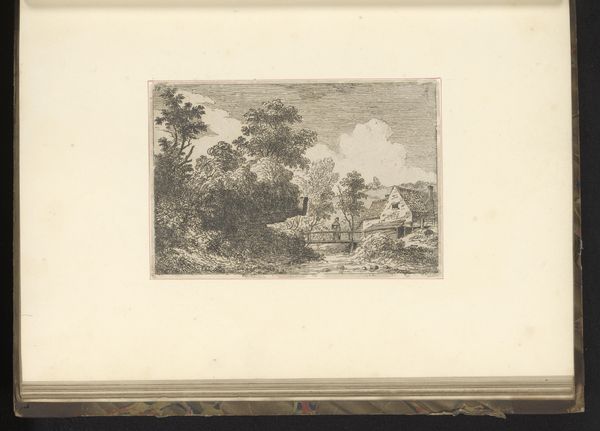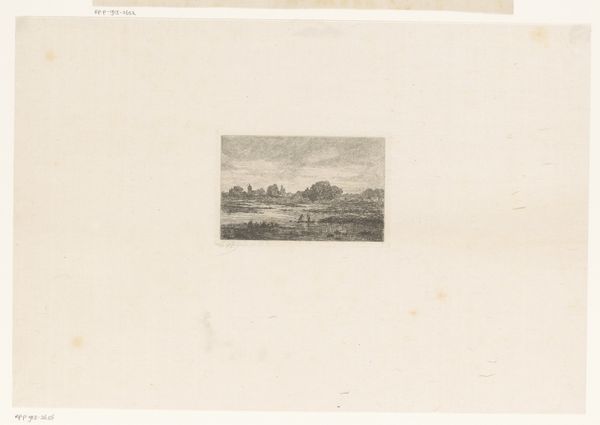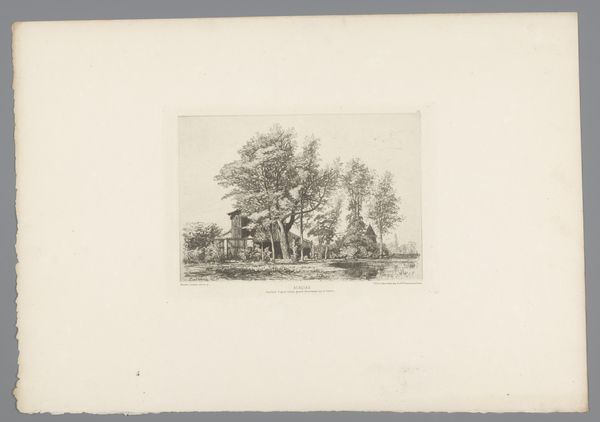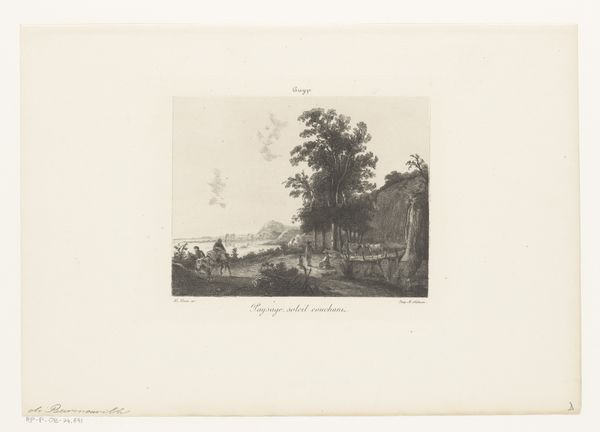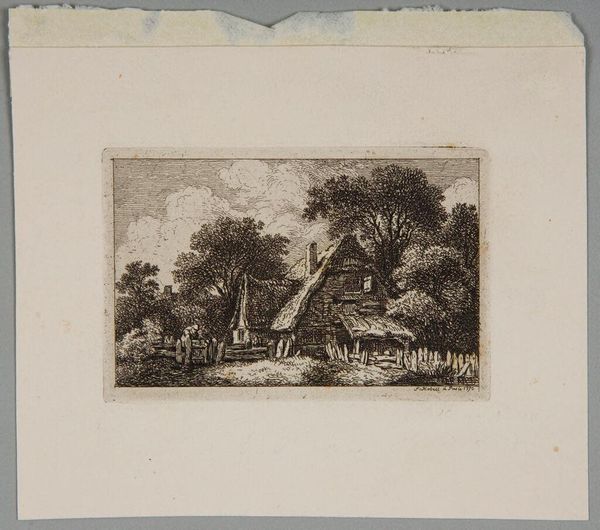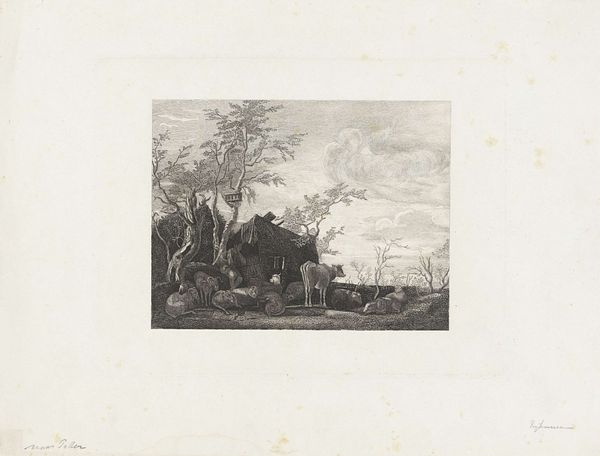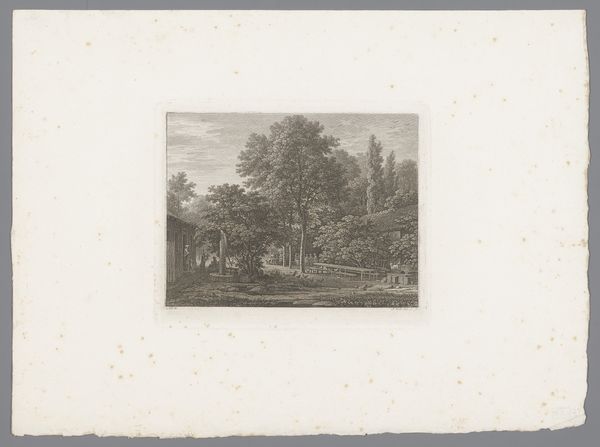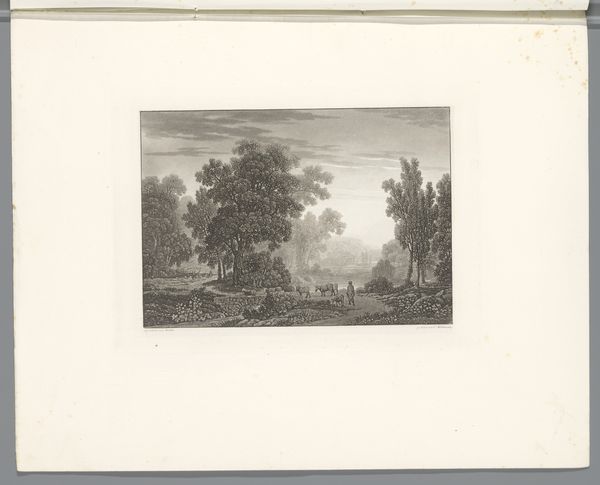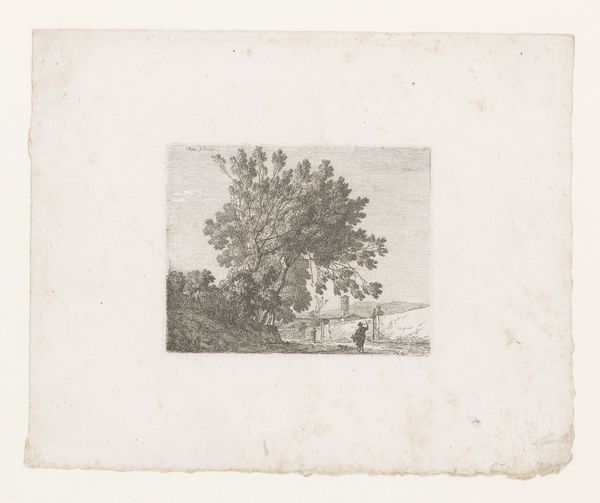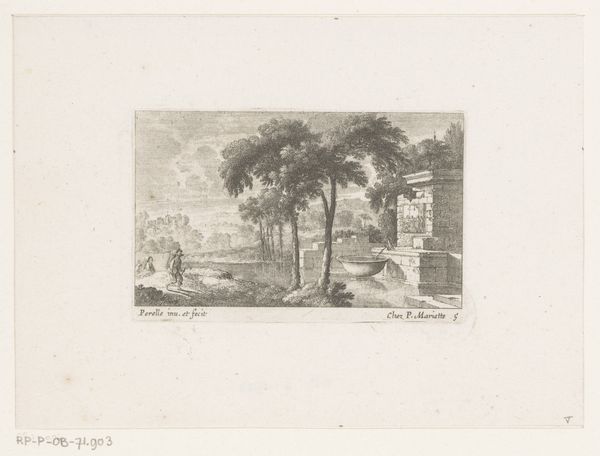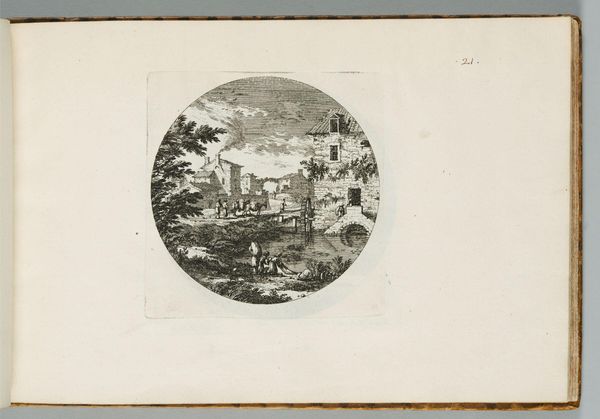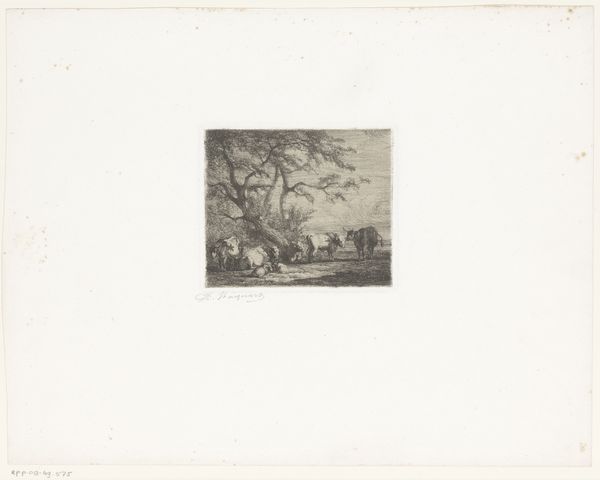
print, engraving
# print
#
landscape
#
charcoal drawing
#
cityscape
#
engraving
#
realism
Dimensions: height 190 mm, width 240 mm
Copyright: Rijks Museum: Open Domain
Curator: Standing before us is "De Saaihal te Leiden, ca. 1500" by Willem Steelink. Although titled to reflect a view around 1500, it was actually created between 1865 and 1870, rendered using engraving techniques. It is a lovely cityscape view. Editor: My immediate reaction is drawn to the image's tonal range; the artist is masterful in how he suggests light through very careful and precise marks. There is a kind of tranquility here—a palpable quietness evoked by the balance of forms and the atmospheric perspective. Curator: The church spire, that dominates the composition, reaches toward the heavens, literally grounding the visual composition and reflecting perhaps the deep connection between the city and spiritual life. I wonder about the cultural meaning of its prominence during both the imagined past and the era in which it was actually created. Editor: Note the meticulous detail rendered through engraving, particularly evident in the architectural lines of the Saaihal, or cloth hall, the meticulous cross hatching used to create a full sense of volume in the large tree and in the way light interacts with the canal waters. The image rewards careful and repeated looking. Curator: Exactly. These carefully etched marks create an almost documentary sense of realism. The tree, slightly framing the hall to the right, almost acts as an earthly, natural witness to the history of Leiden’s industrious spirit, given Leiden's history as a textile hub. What I see here isn't just documentation; it is cultural memory solidified in image. Editor: Indeed, while on first glance one sees it as simply representational, the compositional choices and light handling offer another layer that elevates it beyond simple record-keeping. Curator: It reminds us that visual representations don’t just capture moments; they filter history, reflecting our values and beliefs back at us. An old building reimagined tells more than one story. Editor: Yes, the power of art is really in how it makes you question your own understanding and experience, while also expanding it with new knowledge. Curator: Precisely! It prompts us to look not only at Leiden, but at how we collectively shape and perceive our worlds. Editor: An engaging testament to how the formal construction of a composition truly shapes what you might actually feel when you look at a piece.
Comments
No comments
Be the first to comment and join the conversation on the ultimate creative platform.

